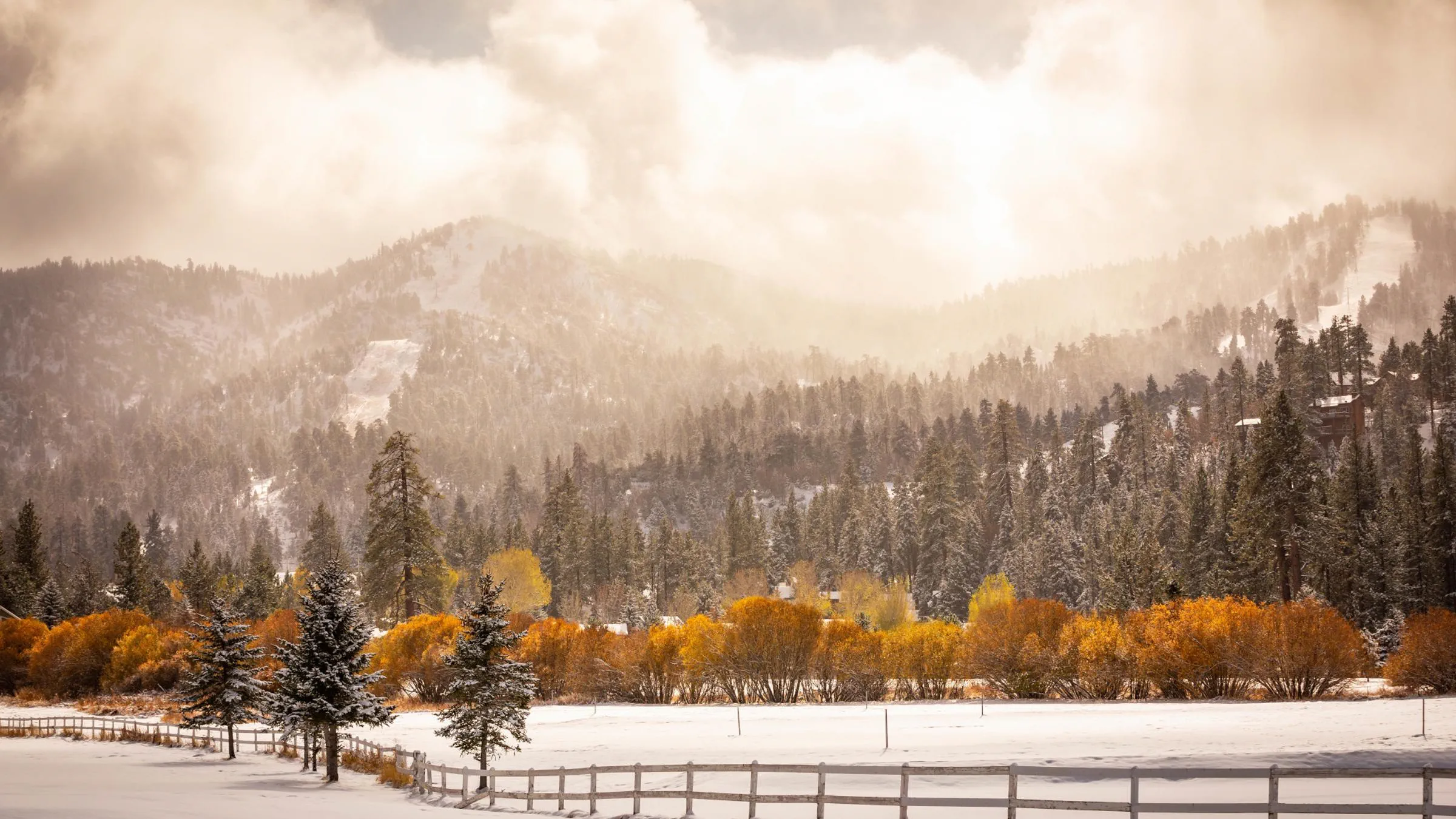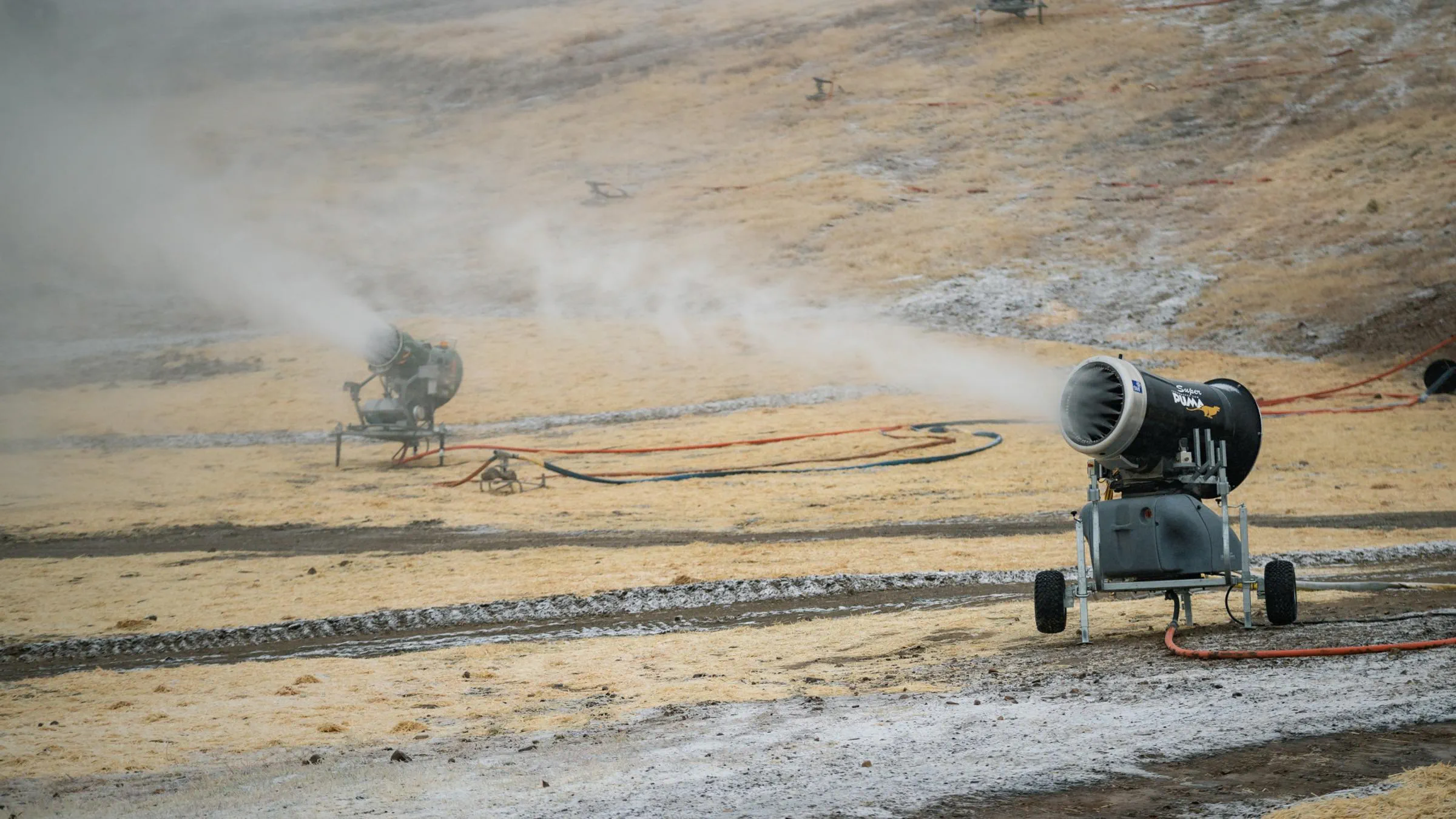Tips on Getting Ready for Winter
What to Know Before the Flakes Start to Fly
How to Prepare for the Winter Season
The mountain temperatures are starting to fall faster than the autumn leaves, which means another ski and snowboard season is almost here. Before the flakes start flying and the lifts start turning, a lot of prep work takes place behind the scenes to get our mountains – Snow Valley, Snow Summit, and Bear Mountain – ready for another winter for alpine good times.

The transition process begins after summer operations conclude in October, with our Park Staff performing a full assessment of the trails and all terrain park features at both mountains to make sure they’re ready to ride. At the same time, the Snowmaking team inspects of all water lines and snow guns while monitoring the short- and long-range forecasts for the best snowmaking conditions. Similarly, the Lift Maintenance crew conducts a thorough review of all lifts, including the terminals, carriers, and cable lines, while other departments like the sport shops and the rental shops take on the time-consuming tasks of swapping out their seasonal inventory for the upcoming winter.
Historically, Big Bear Mountain Resort (BBMR) receive an average of 100-150 inches of natural snowfall in the winter. Stay in the know by signing up to the weekly Snow Report emails to get the forecast delivered straight to your inbox. For more historical data, visit the historical snowfall page.
BBMR is known for having the best snow and most dependable conditions in Southern California thanks to our extensive snowmaking capabilities, which benefit guests by providing more reliable skiing/riding conditions as well as enhancing the snow throughout the season.

We can’t wait to get you on the slopes! Ski and snowboard lift tickets, lessons, rentals, and snow tubing are available to purchase. Opening day for the 25/26 winter season will be announced in early December.
Here are a few ways to help you get ready for your next winter adventure now at Big Bear Mountain Resort. rich-text, responsive-table

The transition process begins after summer operations conclude in October, with our Park Staff performing a full assessment of the trails and all terrain park features at both mountains to make sure they’re ready to ride. At the same time, the Snowmaking team inspects of all water lines and snow guns while monitoring the short- and long-range forecasts for the best snowmaking conditions. Similarly, the Lift Maintenance crew conducts a thorough review of all lifts, including the terminals, carriers, and cable lines, while other departments like the sport shops and the rental shops take on the time-consuming tasks of swapping out their seasonal inventory for the upcoming winter.
Historically, Big Bear Mountain Resort (BBMR) receive an average of 100-150 inches of natural snowfall in the winter. Stay in the know by signing up to the weekly Snow Report emails to get the forecast delivered straight to your inbox. For more historical data, visit the historical snowfall page.
BBMR is known for having the best snow and most dependable conditions in Southern California thanks to our extensive snowmaking capabilities, which benefit guests by providing more reliable skiing/riding conditions as well as enhancing the snow throughout the season.

We can’t wait to get you on the slopes! Ski and snowboard lift tickets, lessons, rentals, and snow tubing are available to purchase. Opening day for the 25/26 winter season will be announced in early December.
Here are a few ways to help you get ready for your next winter adventure now at Big Bear Mountain Resort. rich-text, responsive-table
Close Video
24/25 Winter Recap
After nearly five incredible months of skiing and riding at Southern California’s snow capital — highlighted by the opening of the Midway lift at Bear Mountain — we want to thank you for spending this winter with us.
Explore More
rich-text, responsive-table




























